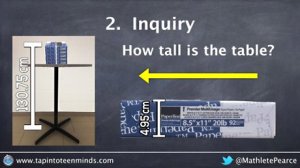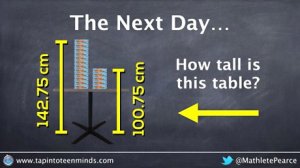“Fitting In” PBL
Read about how four teachers fit PBL into their curriculum through scalable projects that challenged and enriched students while meeting the standards.
Regularly, teachers tell me that they don't feel as though they have time for project-based learning (PBL). While they like the idea in theory, they can't see a way to realistically "fit it in" with their curriculum given constraints of time, testing, standards, etc. A regular response to the concept of PBL is: "It sounds great, but. . . " Too often, they see it as a manufactured experience that results in the construction of a massive project and requires enormous amounts of class time. However, I believe that this is often because the emphasis is on the final product rather than the instructional strategy.
The true focus of PBL is encouraging students to engage in inquiry, explore real-world contexts, and share their learning with others. In the examples below, every teacher achieves these goals while still meeting curriculum requirements and without sacrificing an abundance of class time. While PBL may seem daunting, these teachers prove that it is more attainable and manageable than initially perceived.
Coming Out of Hibernation
With spring approaching, Meghan Zigmond's first grade class began to explore the concept of hibernation. She wanted her students to engage in the inquiry process, make a personal connection to the content, and then showcase their learning. To kick off this event, they read Over and Under the Snow by Kate Messner and then started asking questions like, "How do animals sleep so long?"
To support their learning, and to get them to conduct some independent research, Meghan combined a series of books at an appropriate reading level with a ThingLink of multimedia resources.
Students wrote and drew to capture their thinking and then ultimately shared their learning by creating short videos that Meghan could post to her blog. While the reading and note taking occurred over several days, the focus in Meghan's class was on the process of asking questions and then constructing understanding -- not on a massive project. In fact, most of their final videos were under 20 seconds.
Inquiry in the Middle School Math Class
"Why do we have to know this?" is a common question in math classes. Unfortunately, students often don't have an opportunity to see math "in the wild." Instead, they repeatedly work through textbook problems and then progress to the next disparate set of skills.
In Kyle Pearce's classroom, however, students engage in 4-Part Math:
- Minds On: Warm-up activity to review previous knowledge
- Inquiry: Discovery challenge for the day rooted in real-world context
- Connections: Share solutions and ideas
- Consolidate: Apply context to "textbook"-type problems

Each class period progresses through this four-part process with a heavy focus on inquiry. Rather than force students to work through a problem absent from a real-world situation, Kyle engages them in discovery challenges that require them to apply prior knowledge and construct new understanding so that "they will ultimately 'bump into' the learning goal along the way."
Each day builds on the discoveries of the previous one, allowing Kyle's students to consistently tackle increasingly complex problems.

As Heather Wolpert-Gawron writes, "PBL doesn't ask you to replace your content. It asks that you create a vehicle in which to communicate your content." In Kyle's classes, students not only gain the requisite mathematical knowledge, but also valuable experience in applying their understanding to the world around them.
Teaching the World
For Jodie Deinhammer, it all started with a simple question: "How can we help improve our world?" Her anatomy students recognized that children have an innate desire to learn, but not always the opportunity. With that in mind, they began creating iTunes U courses and iBooks to teach other kids. This year, her students are collaborating with classes in New Zealand, Kentucky, and Minnesota to tackle this challenge.
Jodie uses PBL as a framework to guide the overall planning of her course. On the first day of school, she has no actual lesson plans -- only goals, objectives, and hopes. She uses her students' interests and questions to guide and modify the topics that she needs to address in accordance with the TEKs. They engage in inquiry, discussion, collaboration, and sharing. Throughout the year, students create components of these larger endeavors in manageable pieces and share them through a class portfolio as well as their iTunes U courses -- all while meeting the prescribed Texas state standards.
"Fitting In" PBL
Chris Lehmann, founding principal of the Science Leadership Academy, has often said, "If you assign a project and get back 30 of the exact same thing, that's not a project, that's a recipe." With 20+ cookie-cutter rocket ships staring her in the face, Christine Boyer realized that she needed a new approach to her Rocket Project. Rather than have every student use the same template to create the same rocket with the same materials, she challenged her students to build a better rocket.
Over eight weeks, her students researched Isaac Newton and rocket design, iterated and tested, documented and reflected. They learned physics, data analysis, nonfiction narrative writing, design thinking, and collaboration. As Christine says at the start of the documentary of her project, "We assign kids things because we want them to get through the curriculum, but what we really want is for them to become innovative thinkers."
As each of these teachers have illustrated, at the heart of PBL lies the power to engage students in meaningful inquiry and immerse them in real-world context. When it becomes a lens through which to view curriculum, it can be a powerful strategy to help students make meaningful connections to their learning -- and it fits in with the curriculum.
